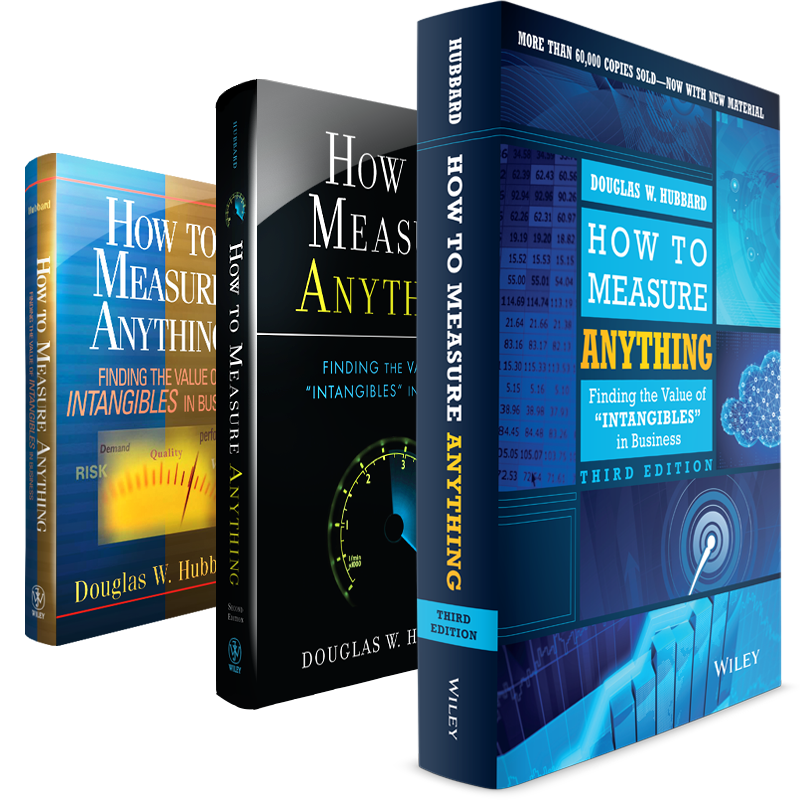Ten Years of How to Measure Anything
 On August 3, 2007, the first edition of How to Measure Anything was published. Since then, Doug Hubbard has written two more editions, three more books, in eight languages for a total of over 100,000 books sold. How to Measure Anything is required reading in several university courses and is now required reading for the Society of Actuaries Exam prep.
On August 3, 2007, the first edition of How to Measure Anything was published. Since then, Doug Hubbard has written two more editions, three more books, in eight languages for a total of over 100,000 books sold. How to Measure Anything is required reading in several university courses and is now required reading for the Society of Actuaries Exam prep.
Over the years, Hubbard Decision Research has completed over 100 major measurement projects for clients in several industries and professions. Clients included The United Nations, the Department of Defense, NASA, a dozen Fortune 500 companies, and several Silicon Valley startups.
Just since the first book, Hubbard Decision Research has trained over 1000 people in the Applied Information Economics methods. HDR has also been given several new measurement challenges including the following:
- drought resilience in the Horn of Africa
- the risk of a mine flooding in Canada
- the value of roads and schools in Haiti
- the risk and return of developing drugs, medical devices and artificial organs,
- the value and risks of new businesses
- the value of restoring the Kubuqi Desert in Inner Mongolia
- the value and risks of upgrading a major electrical grid
- new cybersecurity risks
- ….just to name a few
We have a lot going on in this anniversary year. Here are some ways you can participate.
- Have you been using methods from How to Measure Anything to solve some critical measurement problem? Let us know your story. We will be giving the top 3 entries up to $1,000 worth of How to Measure Anything webinars including your choice of any of the “Intro” webinars, Calibration training, and AIE Analyst training or time on the phone with Doug Hubbard. Send your entry to HTMA@hubbardresearch.com by Friday, August 11.
- We are continuing our research for a future topic “How to Measure Anything in Project Management” If you are in the field of project management, you can help with the research by filling out our project management survey. In exchange, you get a discount on project management webinars and a copy of the final report.
- We are offering an anniversary special for books and webinars for a limited time.
- See Doug Hubbard team up with Sam Savage in Houston and DC for our joint Probabilitymanagement.org seminars on modeling uncertainty and reducing uncertainty with measurements.



